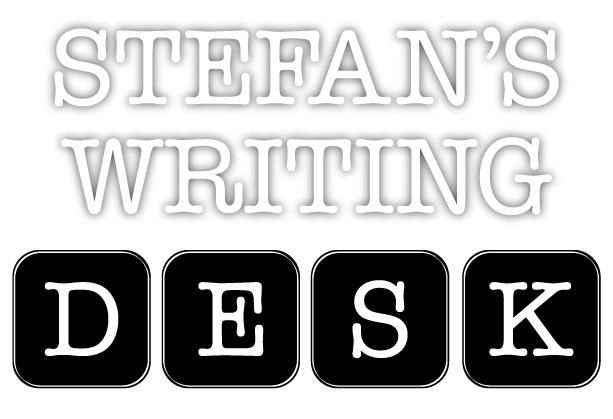I see a massive pendulum suspended high above an ancient, vast landscape. One side of the image is bathed in light, the other lies in darkness. The pendulum swings from the darkness to the light and back in the opposite direction.
When we meet our hero, a young warrior, she is about to step onto the pendulum. At that moment it has swung from the light toward the darkness and is now half way across and closest to the ground, in the place where light and darkness meet in eternal twilight.
She looks back briefly, toward the light, and then turns to face the darkness ahead.
The pendulum will bring her into the depth of it and to a place where no light can ever enter. She must pass through this and reach the tipping point, the moment of suspended stillness where, for one single instant, it hovers in the place where there is nothing but the dark. From there her head turns and she can see, far in the distance, the light as it increases, slowly but with absolute certainty.
A lot of stories, I believe, entail that very same journey.
We meet the hero in the twilight, the space between darkness and light that is neither here nor there, where there is no real happiness but also only a relatively small amount of pain. From that point, we accompany her into the darkness and through it to the light at the end. And we don’t do that just once. We don’t just read one story. We read dozens, hundreds, thousands even.
Why is that?
I think it is ultimately our own story we are reading each time we open a book. We are not completely filled with joy (a.k.a. the light side), neither are we so depressed that we can’t even pick up a book (the darkness). We are, usually and in general, somewhere in between. The reason we jump onto the pendulum is that this state of twilight is no longer able to sustain us. We spend most of our lives in a no-mans-land. We know we need to change something but we also know that, in order to get to the light, we must first conquer the darkness.
In the metaphor of the pendulum, there is, for me, a moment where we could step off, where we realize we don’t need to be on this journey anymore. But the only place where we can do this is at the tipping point of the light side. That is the place where we are the closest to our true identity. At any other spot on the long journey, we are strangers in a strange land. We cannot stand the darkness and are, at the same time, fully accustomed to the twilight. And yet, something seems to call us home and into the light. That voice is small but persistent, like a steady feeling of dread, a longing we cannot explain, that pushes us to do something, anything,
to get back to where we came from.
We know we ultimately can’t stay in the twilight. We have to step onto the pendulum one day. That will be the day when our own hero’s journey begins.
Cheers,
Stefan
Stefan is an author living and working in New Paltz, New York. Check out his work here.









